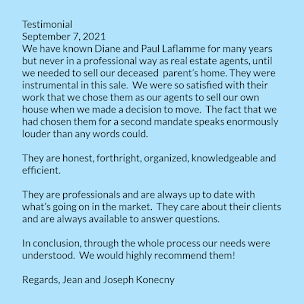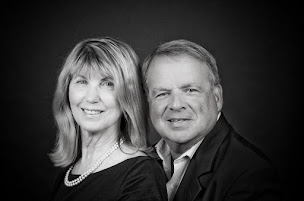Maple syrup: Learning the new language
MONTREAL - What does maple syrup taste like?
Sweet, most people would say. Maple-y.
Nathalie Martin, though, has a more florid vocabulary to describe Quebec’s most popular natural commodity. She’ll close her eyes and describe “the aroma of vanilla,” “notes of chocolate” and “hints of hazelnut and spice.”
Martin is a research scientist in maple chemistry and a trained “sensory evaluator” at Centre Acer in St. Hyacinthe, a research centre devoted to maple syrup.
Until recently, there weren’t too many words to describe the taste of boiled-down sap. Maple syrup has long been described by its colour. The official classifications – extra light, light, medium, amber and dark – are based on visual cues that have nothing to do with taste or quality. Spectrometers are used to measure the amount of light that passes through the different grades. The more light that passes through, the higher the grade.
But over the last several years, a new language has emerged to describe the taste of maple, much like the terminology wine lovers use to speak of their favourite vintages and varietals. In 2004, scientists working with Agriculture Canada and Centre Acer developed something called the Flavour Wheel for Maple Products, or La roue des flaveurs in French. It is a tool that sets out six “flavour groups” with nearly 100 words to describe the taste of maple – from marshmallow, butter, grassy, kiwi and mango to sawdust, pine, cloves and black licorice.
“Contrary to what most people think, maple syrup isn’t just maple syrup. Like with wine, cheese, chocolate and olive oil, there are many nuances in the tastes and aromas,” said Martin, citing a recent study that found more than 60 chemical compounds in maple syrup, all of which affect taste and aroma.
A confluence of factors affects those variations – everything from where and when the sap was tapped to how the fire to evaporate the syrup was fuelled, and whether the sap dripped from the tree trunk into a bucket or was pulled by gravity through a network of plastic tubing.
For instance, maple syrup from sap tapped early in the season is typically light or extra light in colour. And it usually holds hints of delicate flavours. Think vanilla, marshmallow, light brown sugar.
By the end of the season, around late April or early May, the syrup coming out of the evaporator is more likely to be medium or dark in colour. Its taste will have changed, too, to more pronounced flavours falling into what sensory specialists call the “empyreumatic” group. Then, the maple syrup will evoke crème brûlée, coffee beans and dark chocolate, even a subtle hint of smokiness.
Martin says those changes are in part due to the evolving chemical composition of the sap as the maple trees go from dormant to budding. As spring advances and the trees come alive again, the blend of sucrose, glucose and fructose sugars within the sap alters, and amino acids are formed, which, with heat, causes the syrup to be stronger-tasting.
The boiling temperature in the sugar shack is another factor that affects taste. Martin says studies have found that a cabane à sucre where the evaporators are fuelled with wood have a less constant temperature than cabanes à sucre where the operations are fuelled by oil. Typically, the syrup from the wood-fired sugar shacks leans more toward caramel and crème brûlée.
Producers in different regions often boast that their maple syrup is the best. In the Beauce, for example, they swear they can tell their syrup from one coming from Montérégie or the Outaouais. Martin says regional differences may well exist – they just haven’t been scientifically proved yet.
But there is hope that one day Quebec’s maple syrup industry will be able to boast of the special characteristics that the geography, climate and geology of the province’s 10,000 maple groves lend to their syrup. Terroir, they call it.
“If France can have its wines from Bordeaux and Bourgogne, each with its own terroir, then maybe one day Quebec can have its own maple syrups from the Beauce or the Bas Laurentides,” said Martin.
But that’s still a long way off, says Yvon Bois, director-general of Centre Acer. The kind of fine-tuned tasting they do in the lab is hard to do in large-scale production. Of the estimated 10,000 maple syrup producers in Quebec, 8,000 are members of the Federation of Quebec Maple Syrup Producers, who sell their harvest in bulk. (Nearly 80 per cent of it is destined for export – mostly to the United States and Japan.) Many of those are large-scale producers who aren’t so much interested in dissecting aroma notes in the 200,000 barrels a year produced as in controlling quality and spotting off-flavours in defective batches.
For now, the flavour wheel is an efficient way for small-scale maple syrup producers to evaluate the quality of their harvest from season to season. And it lends consumers a new way of describing what they like or don’t like.
France Bisson doesn’t have a chemistry degree and she works out of her family’s traditional cabane à sucre in St. Damase, rather than a lab. But she knows what her customers like.
In the past few weeks, as with every year at the start of the season, the customers who come to visit at the maple grove are serious aficionados in search of extra light and light syrup.
“It’s a Quebec thing, what we are used to. We love the delicate flavour,” she explained. “Maybe it is partly emotional. The first syrup is the sign of life returning to a cold place. It offers hope that things will warm up.”
By contrast, Bisson says she has noticed that customers who buy maple syrup from her stall at Jean Talon Market later in the summer tend to ask for amber or dark.
“Internationally, medium and amber syrups seem to be the most popular,” she said. “Among the tourists who buy, that’s what’s popular.”
Last night Paul and I attended a "Sugaring Off" party at L'Erabliere in Ste-Marthe, Quebec. 450.459.9469. 960 St-Henri, Ste-Marthe. You can bring your own wine or beer. Many agents from Village attended (all offices) and I have to say the food was delicious. Give them a call!!
Read more: http://www.montrealgazette.com/life/Maple+syrup+Learning+language/6271783/story.html#ixzz1pI7uFkPM






